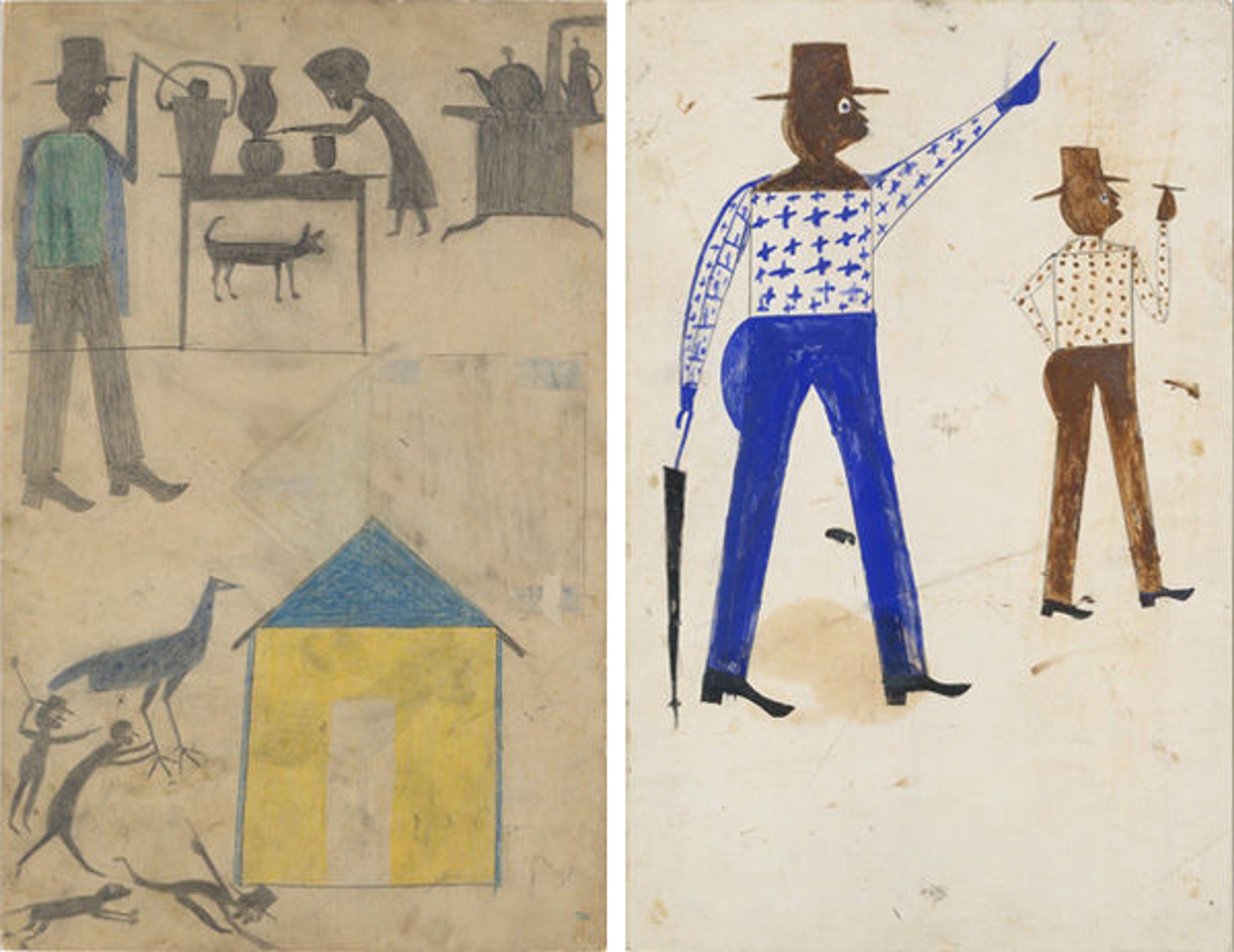
Left: Bill Traylor (American, 1853/54–1949). Kitchen Scene, Yellow House, ca. 1939–42. Pencil and colored pencil on cardboard; 22 x 14 in. (55.9 x 35.6 cm). The Metropolitan Museum of Art, New York, Purchase, Anonymous Gift, 1992 (1992.48). Right: Bill Traylor (American, 1853/54–1949). Two Men Walking, ca. 1939–43. Tempera and pencil on paper; 22 x 14 in. (55.9 x 35.6 cm). The Metropolitan Museum of Art, New York, George A. Hearn Fund, 1992 (1992.47)
«"[Traylor] was beautiful to see—so right with himself and at peace—as the rich imagery of his long life welled up into his drawings and paintings."
—Charles Shannon, 1985
A few weeks ago in gallery 749—where we've been featuring a range of nineteenth-century American folk art—we installed eight drawings from the late 1930s by the acclaimed pioneer of so-called outsider art, Bill Traylor (1853/54–1949). This is the first time in twenty years that these works have been seen at the Met—and the very first in The American Wing.»
Traylor was born into slavery in Dallas County, Alabama, and grew up on a plantation, where he remained until moving in 1938 to the state capital of Montgomery. There he worked as a laborer, then in a shoe factory, until he was physically unable. Based in the heart of Montgomery's vibrant black community, Traylor spent his days drawing the life around him—as well as events from his own past—using old cardboard, graphite and colored pencils, and poster paint. He is thought to have produced more than twelve hundred works, the bulk of which were preserved by Charles Shannon (1914–1996). A young, white, socially conscious painter from Montgomery, Shannon befriended Traylor and went on to promote his work nationally. A number of the Met's Traylor drawings come from Shannon.
Featuring Traylor in The American Wing underlines our commitment to blending more works on paper into our galleries, diversifying our installations with artists of color, broadening our regional scope, and exploring fresh temporal and cultural dialogues among objects. The Traylor drawings will be on view through June, and we encourage you to visit and look out for more such rotations in the coming months.